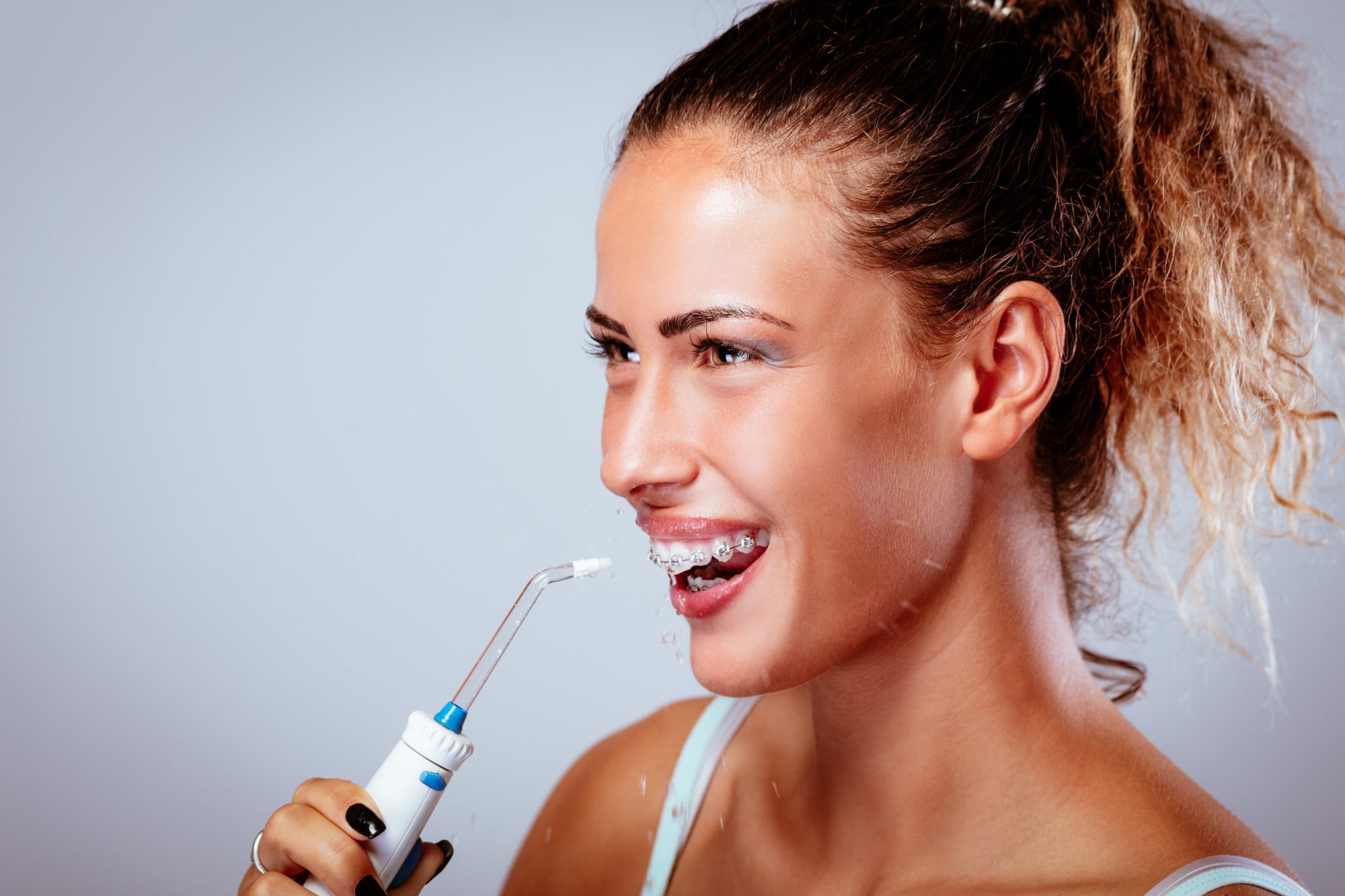
21 Mar Investing in a Water Flosser: Is It the Right Tool for Dental Implants?
According to an American Dental Association survey, only 16% of people floss every day.
This is unfortunate, as flossing prevents gum and dental disease (as well as stinky breath!) This may be due to the fact that people don’t realize there are various methods of taking care of your teeth, including using a water flosser.
Keep reading to find out if a water flosser is the right dental tool for you–even if you have dental implants–so that you can maintain your health and smile.
What Is a Water Flosser?
A water flosser, also known as a water pick or an oral irrigator, is a relatively new invention. Founded in 1962, this device is a stringless method of flossing between your teeth.
They are typically comprised of a few simple pieces:
- A motor and a pump
- A water reservoir
- A water flosser tip
With these components, a water flosser uses a stream of pressurized air and water that is delivered in pulses. It works to remove unwanted mouth particles like bacteria, food, and plaque between teeth.
Flossing, in general, removes 40% of these unwanted particles to promote oral hygiene. Brushing does the rest. So, it’s easy to see why flossing (even with a water flosser) is essential to your health.
How Do You Use It?
If you’ve done any research on the topic, you may have noticed that people claim water flossers are messy.
This is due to the fact that there’s a certain way to use it that prevents spraying water all over your bathroom. You should follow the manufacturer’s instructions before using a water floss. In general, this is how you do it.
First, you fill the reservoir with lukewarm water and plug it in. While leaning over the sink, you then place the tip of the flosser in your mouth and close your lips as much as you can.
Using the button on the nozzle, you move the tip of the flosser around your mouth between and around each tooth while letting the water exit into the sink. When you’re finished using it, be sure to clean off the tip and unplug the device.
There can be a learning curve with using a water flosser but practice will make perfect.
What Are the Benefits of Using a Water Flosser?
There is an abundance of research showing that water flossers remove more plaque from your teeth than traditional floss.
Plaque is basically bacteria on your teeth that, if left there, hardens into tartar and leads to cavities and gum disease. So, using a water flosser can reduce gum diseases like gingivitis and periodontitis.
The benefit of removing plaque with a water flosser versus traditional floss is that your gums will become less inflamed. String floss requires pressure on the gum which often results in irritation and bleeding.
While this is considered normal, a water flosser may forego these unwanted side effects.
Should You Purchase One?
You may want to purchase a water flosser for the following reasons.
First, many people think that they are more pleasant to use than traditional floss. That means that those who use them are more likely to floss frequently. If that’s the case for you, it’s definitely worth the investment.
Secondly, you’ll appreciate this device if you experience arthritis or have a difficult time angling your hands to clean between your teeth. Water flossers are easier to use than floss in this regard.
Finally, those who have sensitive gums may feel relief from a water flosser versus traditional floss. The stream of water can act as a massager, stimulating your gums and causing less discomfort.
If you decide to try one for yourself, consult with your dentist to get their opinion and recommendations to ensure you choose the right one for your oral needs.
What About If You Have Dental Implants or Braces?
It’s thought that traditional floss may cause damage to dental implants or braces. While this isn’t always the case, it’s definitely possible.
Using a water flosser may allow those with implants and braces to remove debris from hard to reach or sensitive places. That being said, you should consult with your dentist and follow aftercare instructions for dental implants or any other mouth addition when using a water flosser.
This goes for crowns, bridges, veneers, implants, and so on.
Things to Consider
When purchasing a water flosser, you have a variety of options. Most devices must be plugged in to use but you can find cordless ones if that works better for you. They also come in a range of sizes and prices to suit your needs.
If you can, try to choose one that has adjustable settings for water pressure. This will allow you to find what works best for you to have a comfortable experience.
Because there is a water reservoir necessary for the product to work, it’s also essential that you regularly clean it to avoid any mold or contaminants from growing in the container. You don’t want to put extra bacteria in your mouth when you’re trying to get rid of it in the first place.
All of this said, water flossers aren’t necessary for oral health. However, they are a great addition to your routine if they get you to clean between your teeth more often and with more ease.
Develop a Dental Routine
With these facts and considerations, you can decide if a water flosser is the right choice for your hygiene needs.
In general, getting one can’t hurt. You should still use regular floss when you can and, of course, schedule regular appointments with your dentist.
Contact us today for your dental cleaning and exams to keep your mouth healthy and smiling.


